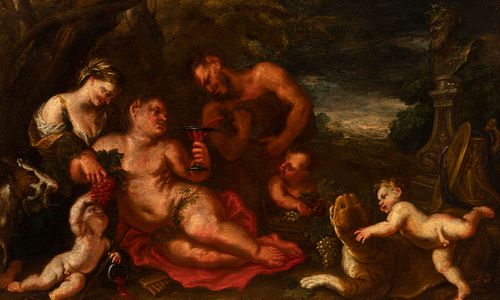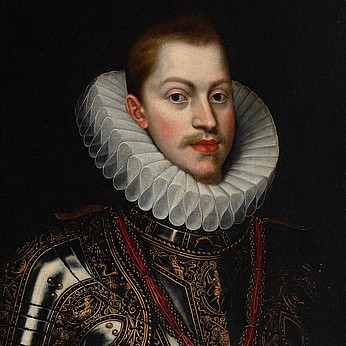DOMENICO PIOLA (Italy, 1627 - 1703). "Bacchanal". Oil on canvas. Relined.
Lot 75
About Seller
Setdart Auction House
Carrer Aragó 346
Barcelona
Spain
Setdart Subastas was born in 2004 and is currently the first online art auction in Spain with solidity, prestige and reliability guaranteed by our more than 60,000 users. Setdart has a young, dynamic and enterprising team ready to successfully manage the purchase and sale of art works through custom...Read more
Estimate:
EUR€10,000 - EUR€12,000
$10,752.69 - $12,903.23
Absentee vs Live bid
Two ways to bid:
- Leave a max absentee bid and the platform will bid on your behalf up to your maximum bid during the live auction.
- Bid live during the auction and your bids will be submitted real-time to the auctioneer.
Bid Increments
| Price | Bid Increment |
|---|---|
| EUR€0 | EUR€10 |
| EUR€200 | EUR€25 |
| EUR€500 | EUR€50 |
| EUR€1,000 | EUR€100 |
| EUR€3,000 | EUR€200 |
| EUR€5,000 | EUR€500 |
| EUR€10,000 | EUR€1,000 |
| EUR€20,000 | EUR€2,000 |
| EUR€50,000 | EUR€5,000 |
About Auction
By Setdart Auction House
Nov 24, 2021
Set Reminder
2021-11-24 09:00:00
2021-11-24 09:00:00
America/New_York
Bidsquare
Bidsquare : Old Masters, Day 1
https://www.bidsquare.com/auctions/setdart-auction-house/old-masters-day-1-7873
Setdart Auction House sofia@setdart.com
Setdart Auction House sofia@setdart.com
- Lot Description
DOMENICO PIOLA (Italy, 1627 - 1703). "Bacchanal". Oil on canvas. Relined. Measurements: 65 x 106 cm; 80 x 122 cm (frame). In this canvas the painter presents us several characters, celebrating a bacchanal, around a male figure who is lying down, while he is being courted by the other characters. His physical characteristics indicate that this is not a representation of Bacchus, god of wine, nor of Silenus, Bacchus' adoptive father and mentor. However, his distinguished position in the composition indicates that he is a relevant character of the Bacchic court. A faun offers him wine, and a bacchante sits behind him. In the scene that is located in a rich exterior, adorned by architectural elements of classical inspiration, we can appreciate several attributes that allude directly to the iconography of Bacchus, an example of this is the abundant presence of bunches of grapes, the faun already mentioned and for example the presence of the leopard. Bacchus, or Dionysias by the Greeks, is one of the most interesting figures of Greco-Roman mythology. This singular god presided over wine and the harvest of the vine, and was, together with the goddess Demeter, one of the two most important authorities related to the land and cultivation. While Dionysus presided over viticulture and the cultivation and harvesting of the vine, one of his most interesting characteristics is that he also presided over theater, religious ecstasy and ritual madness. Dionysus was the last god to enter Olympus, for this reason sometimes he is considered as part of it and other times he is considered as outside Olympus, and his place is occupied by the goddess Hestia. Another detail of Dionysus is that he, being the son of Zeus and Semele, a mortal woman, was sometimes not considered a god properly speaking, and was relegated to the status of demigod or hero. Domenico Piola was one of the most notable painters of the Genoese school of the 17th century. He gained great recognition during his lifetime, as indicated both by the many private commissions from aristocratic families and the Genoese Church. Although the work of this study is located between 1640 and 1650, Piola's real success took place in the second half of the century, when his works also reached the peak of virtuosity and quality. This artist trained with Pellegro and Capellino, although he himself, in time, would become master of a large workshop that would house a large part of his family, including brothers, a half-brother, sons-in-law and sons. In fact, the relationship between the large workshop and the artist's family was so close that it became known as "Casa Piola".
- Shipping Info
-
In-house shipping available. Please inquire at admin@setdart.com.
-
- Buyer's Premium



 EUR
EUR CAD
CAD AUD
AUD GBP
GBP MXN
MXN HKD
HKD CNY
CNY MYR
MYR SEK
SEK SGD
SGD CHF
CHF THB
THB















